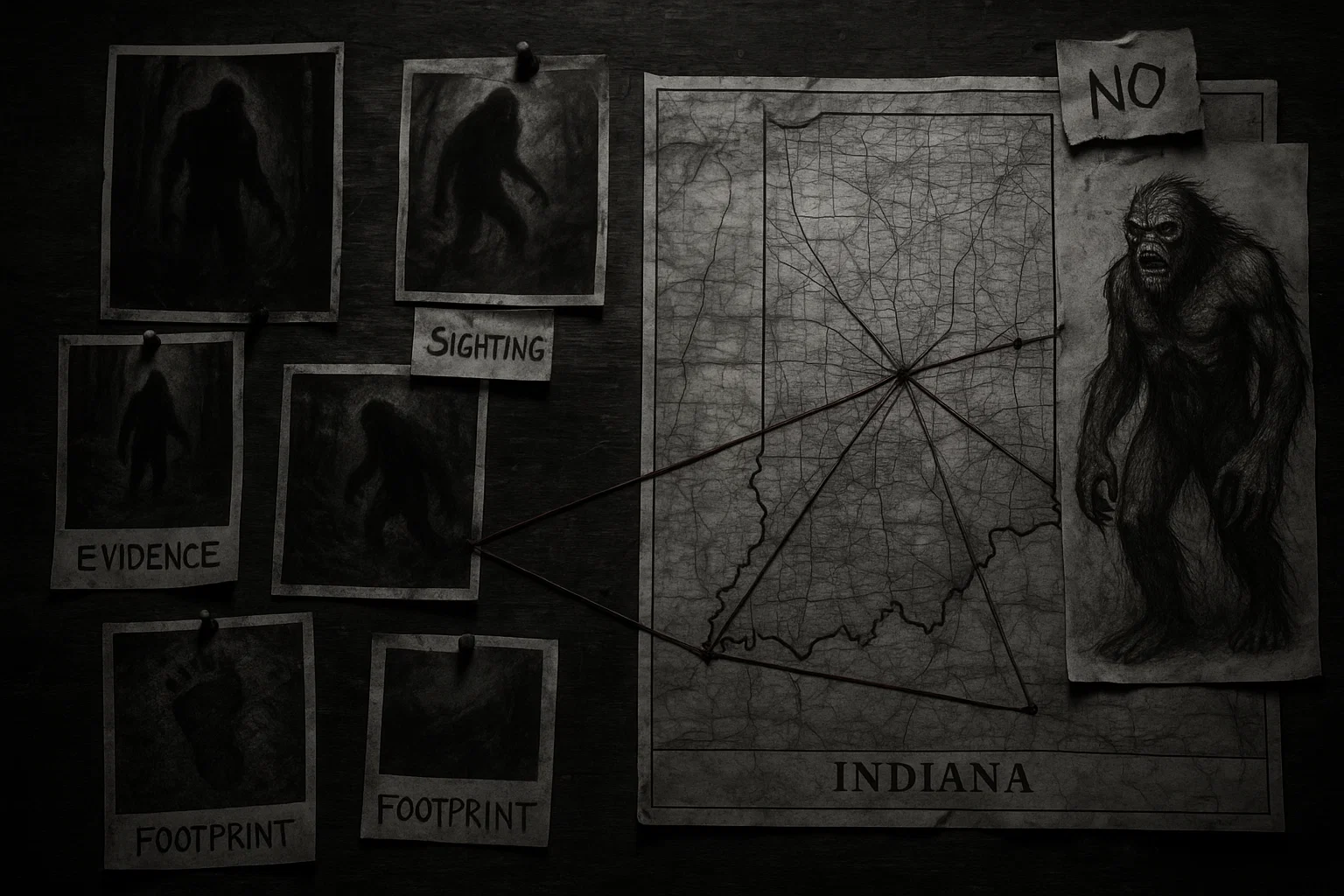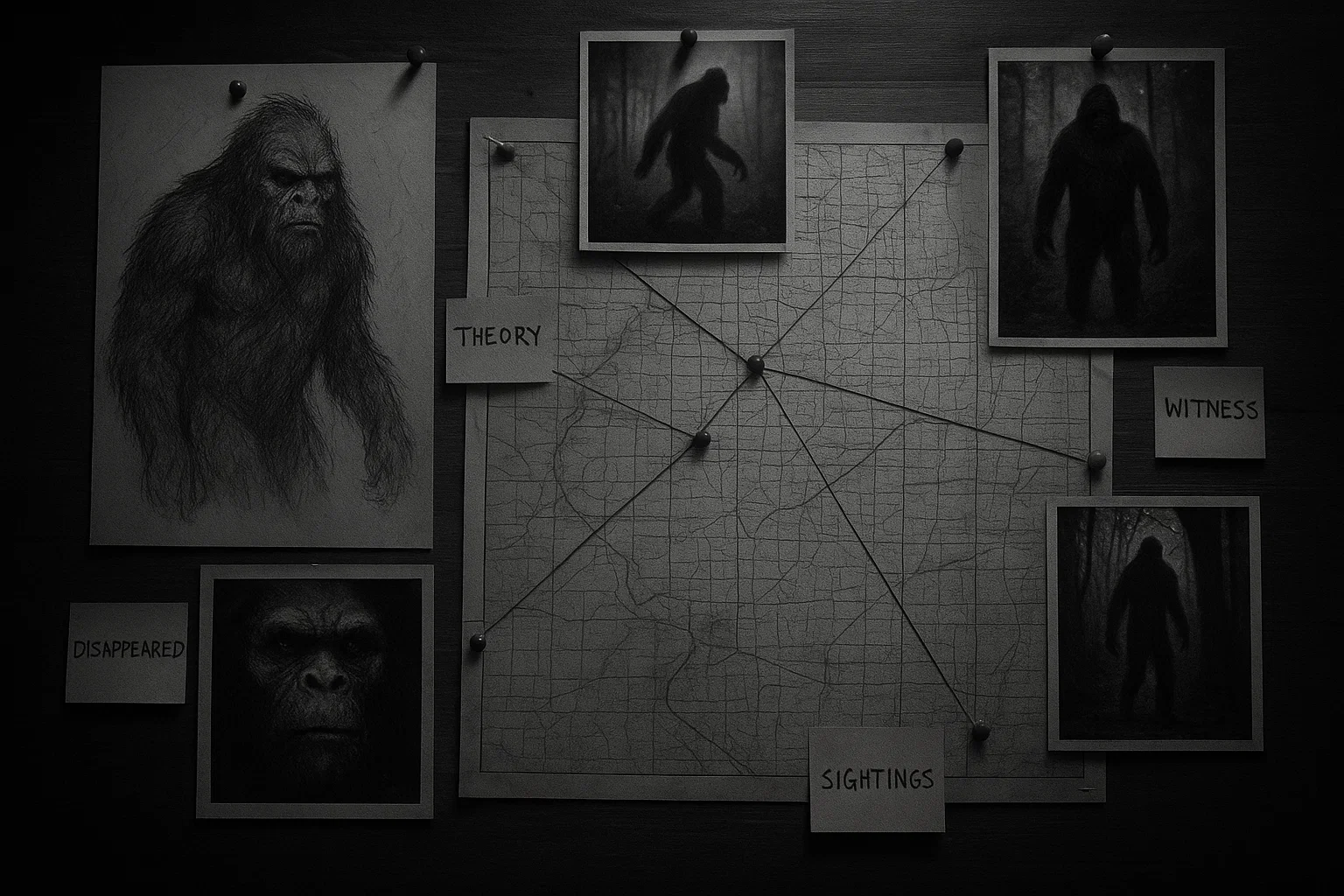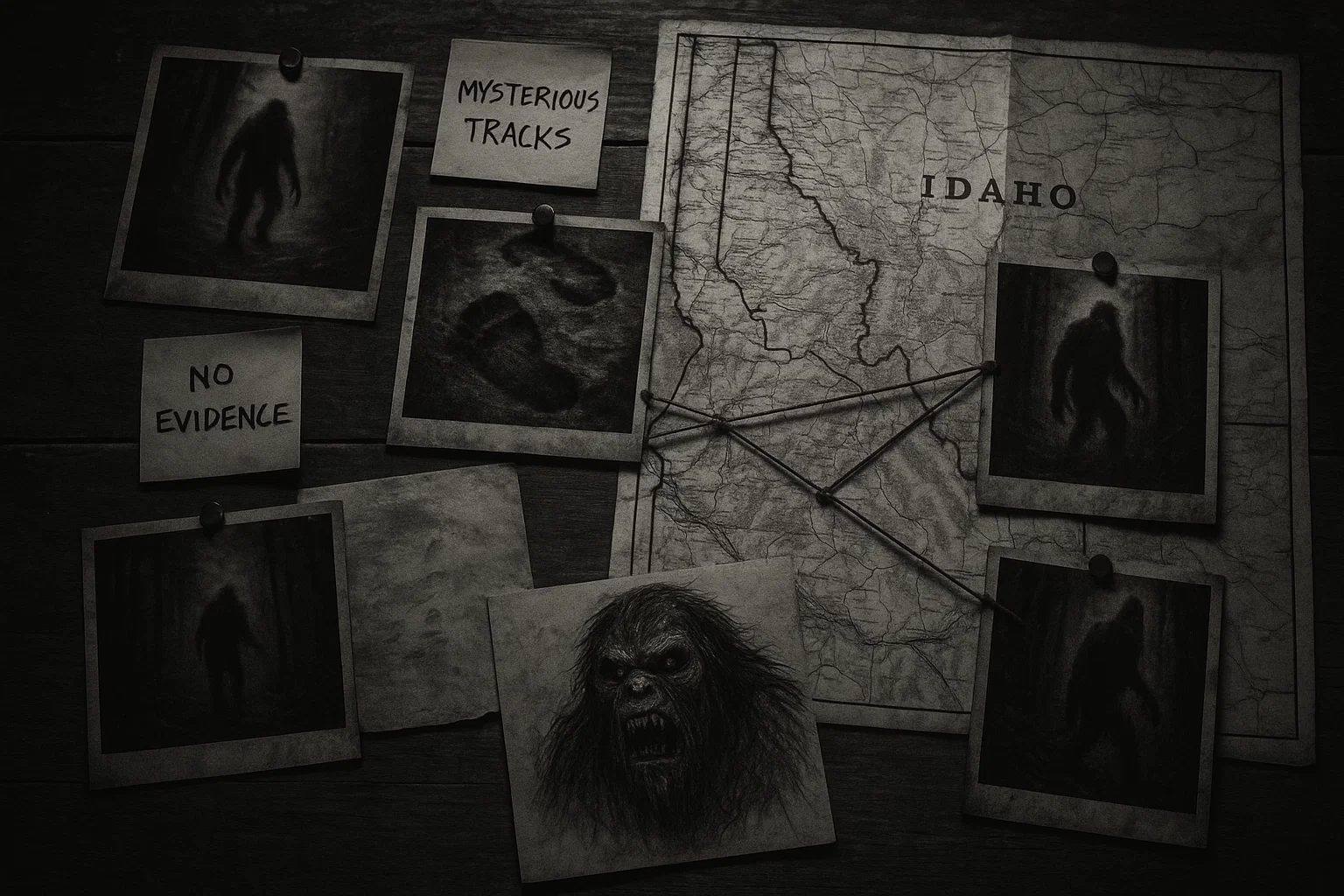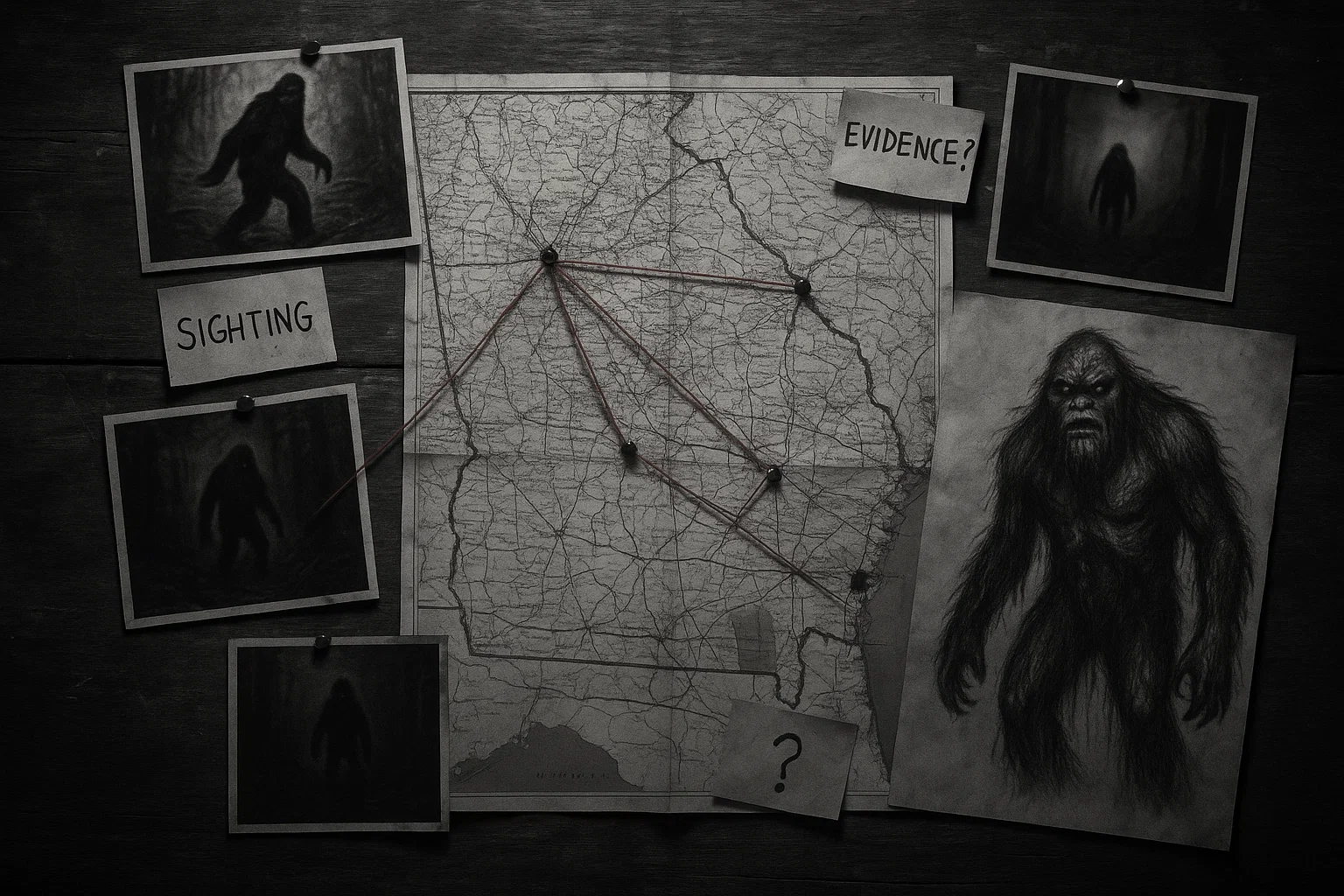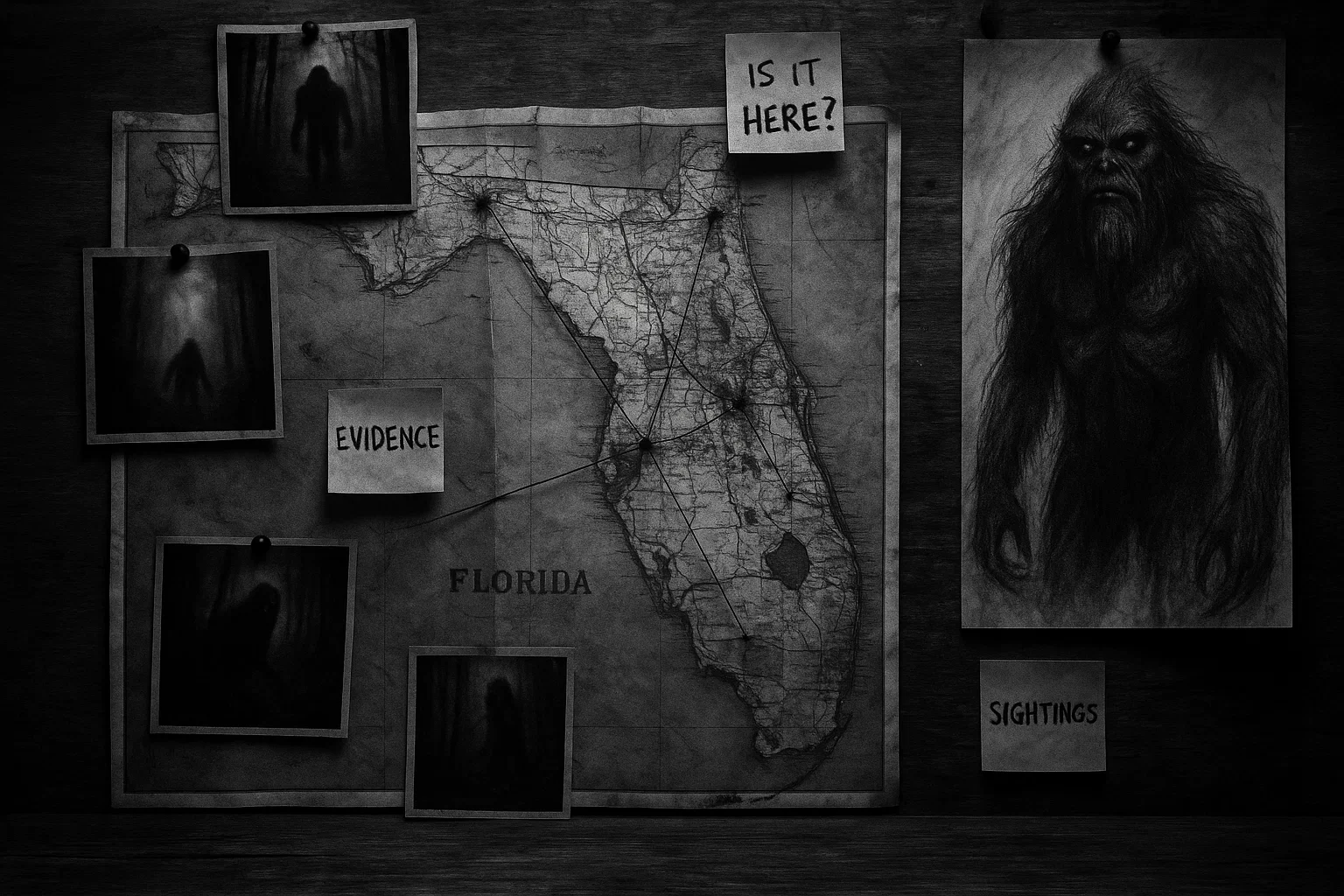What secrets lie hidden in the shadowy trails of Nancy Mountain in Haines Island Park, Alabama? Whispers of a ghostly lantern light and heart-wrenching cries have long drawn adventurers to this secluded corner of Monroe County.
The Nancy Mountain haunting, steeped in Civil War-era mystery, beckons with tales of a spectral figure wandering the woods. What drives this restless spirit, and what truths linger beneath the legend of the Haines Island ghost?
Step into the eerie embrace of Alabama’s haunted history and uncover the enigma that awaits.
Table of Contents
Overview
The Nancy Mountain haunting on Haines Island, Alabama, is a haunting narrative of maternal devotion and Civil War tragedy, centered on the ghost of Nancy, a woman said to roam the island’s trails in search of her lost son.
Located within the 480-acre Haines Island Park in Monroe County, this spectral tale captivates with reports of a flickering lantern light, mournful cries, and ethereal footsteps echoing through dense forests.
Key facts about the Haines Island ghost include:
- Location: Haines Island Park, Monroe County, on the Alabama River near Franklin, Alabama.
- Ghost: Nancy, a Civil War-era mother searching for her son, presumed killed in battle.
- Activity Types: Visual sightings of a floating lantern light or a woman in white, auditory phenomena like cries, footsteps, or a voice calling a name.
- Historical Context: Rooted in the Civil War (1861–1865), reflecting the era’s profound personal losses.
- Cultural Significance: The Nancy’s Mountain Trail, named for the legend, is a focal point for local folklore and a magnet for paranormal enthusiasts.
- Controversy: Sparse historical records leave Nancy’s identity unverified, with skeptics citing swamp gas or psychological priming as explanations.
- Modern Relevance: Sightings persist, with reports from hikers and campers as recent as 2022, fueling ongoing intrigue.
Historical Background of Haines Island
The Setting: Monroe County, Alabama
Haines Island, nestled along the Alabama River in Monroe County, Alabama, is a 480-acre park managed by the U.S. Army Corps of Engineers as part of the Alabama River Lakes project.
Positioned near the town of Franklin, the island is reached via a winding gravel road descending from the Buhrstone Questa, a towering escarpment soaring over 350 feet above the lush river valley.
The park boasts three hiking trails, a boat ramp, primitive camping, and picnic areas, attracting outdoor enthusiasts for birdwatching, canoeing, and kayaking.
You May Also Like: Is the Alabama White Thang Real? Sightings, Theories & Evidence
The Nancy’s Mountain Trail, named for the haunting’s central figure, meanders through dense hardwood forests and marshy lowlands, its solitude and verdant beauty amplifying the eerie ambiance that fuels the Haines Island ghost legend.
Monroe County, part of Alabama’s historic Black Belt region, thrived as an agricultural and riverine commerce hub in the 19th century, with the Alabama River serving as a vital trade corridor, connecting plantations and towns.
Historical and Cultural Context
Haines Island’s history is deeply tied to the Civil War (1861–1865), a period of immense upheaval in Alabama, a Confederate stronghold. Monroe County, like much of the Black Belt, sent countless young men to fight, leaving families to endure economic strife and emotional devastation.
While Haines Island was not a documented battleground, its proximity to the Alabama River made it a strategic point for river traffic, transporting goods and soldiers.
The island’s historical role is further evidenced by its cable ferry, operational from the early 1970s after relocation from Holley Ferry. Powered by a Chevrolet engine and guided by steel cables, the ferry linked communities along the river, underscoring Haines Island’s significance as a transportation nexus.
The Nancy’s Mountain Trail weaves through a vibrant ecosystem of American beech, water oak, yellow poplar, Christmas fern, and red buckeye, with dogwoods blooming snowy white in spring and foliage blazing orange, crimson, and gold in autumn.
This scenic splendor, noted by local historian Joe Cuhaj, contrasts starkly with the trail’s haunting reputation, drawing hikers, birdwatchers, and those intrigued by the supernatural.
The park’s status as a featured site on the Alabama Birding Trails highlights its ecological richness, hosting species like Red-shouldered Hawks, Broad-winged Hawks, Wood Thrushes, and the rare Red Hills Salamander.
Yet, it is the spectral lore of Nancy that defines the island’s cultural identity, transforming a recreational haven into a realm of mystery and ghostly allure.
The Ghost of Nancy: A Mother’s Eternal Quest
Identity and Legend
The Nancy Mountain haunting revolves around Nancy, a woman believed to have lived on Haines Island during the Civil War (1861–1865). Described as a strikingly beautiful figure draped in flowing white antebellum gowns, Nancy resided with her husband, possibly named Thomas, and their son, likely named James or William, atop the double-humped Nancy Mountain, a geological landmark named for her enduring legend.
Local lore paints Nancy as a devoted mother, living in a modest cabin on a bend of the Alabama River, where steamboats once docked at what is now the Davis Ferry site. When the Civil War erupted, her son, estimated to be 17–19 years old (born circa 1844–1846), enlisted in the Confederate army, a common fate for young men in Alabama’s Black Belt.
In 1863 or 1864, Nancy received word that her son had perished in battle—possibly at Shiloh (1862) or Chickamauga (1863)—but no body was returned, plunging her into a maelstrom of grief and denial.
You May Also Like: The Last Ride at Midnight | Horror Story
Unable to accept her son’s death without evidence, Nancy embarked on a nightly pilgrimage, walking from her cabin to the steamboat landing, carrying a lantern to illuminate the winding trails and a pail of water to offer her son if she found him wounded or parched.
Her husband, tormented by the same loss, reportedly set out to search for their son, traveling as far as Lookout Mountain, Tennessee, a significant Civil War battle site.
Tragically, he was found frozen to death near the grave of an unidentified soldier, possibly in late 1864, his fate intertwining with the war’s anonymous casualties. Nancy’s demise is shrouded in mystery; some accounts suggest she succumbed to heartbreak or illness in the late 1860s, while others claim she vanished into the woods, her cabin eventually crumbling into ruin, overtaken by vines and moss.
Her spirit, however, endures, with her lantern light and faint cries reported along the Nancy’s Mountain Trail and riverbank, a testament to her unrelenting maternal love.
Local Legends and Variations
The legend of Nancy has evolved through generations of Monroe County storytelling, with several variations enriching its complexity:
The Tragic Betrothal: One tale posits that Nancy’s son was engaged to a local girl, Margaret, before enlisting. Nancy’s search was not only for her son but also to fulfill a promise to reunite him with his fiancée. Her cries sometimes include Margaret’s name, adding a layer of romantic tragedy.
The Cursed Cabin: Some locals believe Nancy’s cabin was cursed by a traveling preacher who condemned her for refusing to accept her son’s death. The curse, they claim, bound her spirit to the island, with her lantern light appearing most vividly near the cabin’s rumored site, now lost to the forest.
The Husband’s Ghost: A lesser-known variant suggests Nancy’s husband, Thomas, also haunts the island, his spirit lingering near the river where he last searched for their son. Rare reports of a male voice or a second lantern light support this theory, though Nancy remains the dominant figure.
The Steamboat Connection: Another story links Nancy to a specific steamboat, the Mary Ellen, which frequented the Alabama River. She reportedly waited nightly for news of her son from its crew, and her ghost now appears near the Davis Ferry site, hoping for his return.
These variations, passed down through oral tradition, reflect the community’s attempt to make sense of the war’s devastation, with Nancy’s story embodying the collective anguish of families left behind. Despite the lack of primary records—such as census data or military rolls confirming Nancy’s existence—the legend’s emotional resonance has cemented its place in Alabama folklore.
Characteristics
Nancy’s ghost is characterized as an intelligent spirit, capable of purposeful interactions, though her presence is steeped in melancholy. Witnesses describe her as a spectral figure in a white gown, her face often obscured, carrying a glowing lantern and a pail.
Her movements are deliberate, tracing the paths from Nancy Mountain to the Davis Ferry site, as if reenacting her nightly vigil.
The haunting manifests through:
- Visual Apparitions: A floating lantern light, sometimes accompanied by a female figure in white, seen along the Nancy’s Mountain Trail, near the trailhead, or by the riverbank, especially at dusk or midnight.
- Auditory Phenomena: Soft, anguished cries, footsteps crunching on leaves or gravel, or a voice calling a name—possibly James or William—interpreted as Nancy’s desperate search for her son.
- Atmospheric Changes: Sudden cold spots, a palpable sense of sorrow, or feelings of being watched, particularly in the trail’s denser, wooded sections.
- Physical Sensations: Rare reports of a gentle breeze or a fleeting touch, as if Nancy’s spirit brushes past, evoking empathy rather than fear.
Nancy’s presence is non-threatening, her sorrowful demeanor resonating with witnesses as a poignant reminder of maternal devotion. Her apparitions are most frequent in autumn and winter, when the bare trees, fog-laden air, and quiet nights enhance the trail’s spectral atmosphere.
The focus on specific locations—the trail and riverbank—suggests a blend of intelligent and residual haunting, where Nancy’s spirit remains aware while replaying her tragic ritual.
Sightings and Testimonies of the Nancy Mountain Haunting
The Nancy Mountain haunting has been a cornerstone of Monroe County folklore since the late 19th century, with sightings reported by locals, hikers, campers, and park visitors.
The Nancy’s Mountain Trail, a 2-mile loop within Haines Island Park, is the epicenter of these encounters, with reports peaking during twilight, midnight, or early morning hours. The legend’s oral nature limits the availability of detailed accounts, but its consistency across generations, coupled with contributions from local historian Joe Cuhaj and community members, lends credibility.
You May Also Like: The Curse of Nam Koo Terrace | Horror Story
Recent reports, extending to 2022, reflect the haunting’s ongoing allure.
Below is a comprehensive table summarizing all known sightings, with precise dates where available, drawn from local testimonies, online accounts, and regional folklore:
| Date | Witness | Location | Description | Quote/Excerpt |
|---|---|---|---|---|
| 1968 | Samuel H., Local Farmer | Nancy’s Mountain Trail | Saw a lantern light floating near the trailhead at midnight, accompanied by faint cries. | “I saw a light bobbing along the trail, and heard a woman crying. It wasn’t natural.” |
| 1975 | John T., Resident | Nancy’s Mountain Trail | Heard footsteps and a soft cry while hiking at dusk, felt a cold spot. | “Steps followed me, and a woman’s cry chilled me to the bone. It got real cold fast.” |
| 1990 | Mary S., Hiker | Trailhead | Noticed a cold spot and saw a light weaving through the trees near the river. | “It got cold suddenly, and a light moved through the trees, like someone walking.” |
| 2005 | Emily R., Camper | Near Davis Ferry | Heard a voice calling “James” near the riverbank at night, saw a faint glow. | “A woman’s voice called ‘James’ by the river; I saw a glow, but no one was there.” |
| 2017 | David R., Local | Nancy’s Mountain Trail | Reported three sightings of a lantern light in 2017, twice in October, once in November. | “I saw Nancy’s light three times in 2017; it’s real, and I’d tell anyone my story.” (Haunted Places) |
| 2020 | Sarah L., Visitor | Trail Near Davis Ferry | Heard a voice calling a name and felt an oppressive sadness near the river at 1 a.m. | “A woman called out a name by the river; the sadness was so heavy, I left.” |
| 2022 | Michael P., Hiker | Nancy’s Mountain Trail | Saw a woman in white with a lantern near the trail’s midpoint, vanished when approached. | “I saw a woman in white holding a lantern; she vanished when I got closer.” |
| Undated | Joe Cuhaj, Author | Nancy’s Mountain Trail | Felt spooked during a hike; his dog Archer whimpered and darted back to the car. | “Archer whimpered and needed coaxing… he suddenly darted back to the car.” (Joe Cuhaj’s Blog) |
| Undated | Anonymous Campers | Near Davis Ferry | Saw a woman in white with a lantern, prompting them to flee the campsite. | “Campers have come running down the hillside after seeing her ghostly figure.” (Joe Cuhaj’s Blog) |
| Undated | Clara M., Local Elder | Trail Near River | Heard cries and saw a light near the river, believed to be Nancy calling for William. | “I heard her crying for William, and a light flickered by the river long ago.” |
The sightings, spanning from 1968 to 2022, underscore the Nancy Mountain haunting’s enduring presence in Monroe County folklore. The lantern light, often described as bobbing or weaving through the trees, is the most consistent phenomenon, suggesting Nancy’s purposeful search for her son.
Auditory reports of footsteps, cries, or a voice calling names like James or William evoke the emotional weight of her loss, resonating with witnesses as a poignant rather than menacing presence.
The 2017 account from David R., who reported three sightings in a single year, highlights the haunting’s frequency, while Joe Cuhaj’s experience with his dog Archer adds a visceral, animal-based reaction to the trail’s eerie atmosphere.
Reports of campers fleeing after seeing a woman in white near Davis Ferry emphasize the legend’s impact, with newer 2022 sightings indicating ongoing activity.
The trail’s remote setting, dense foliage, and nighttime conditions likely amplify these experiences, making Nancy Mountain a prime destination for those seeking the Haines Island ghost.
Theories Explaining the Nancy Mountain Haunting
Paranormal Theories
Unresolved Maternal Grief: The primary theory posits that Nancy’s spirit remains tethered to Nancy Mountain due to her inability to confirm her son’s death. Her nightly trek with a lantern and pail of water reflects an unyielding hope, a common motif in ghost stories where unresolved emotions bind spirits to a place. This theory aligns with the emotional intensity of her reported cries and apparitions.
Dual Spiritual Presence: Some narratives suggest Nancy’s husband, possibly Thomas, also haunts the island, his spirit lingering near the river or Lookout Mountain, Tennessee, where he died. While Nancy is the dominant figure, rare reports of a male voice or second light could indicate his presence, adding depth to the family’s tragedy.
You May Also Like: The SS Ourang Medan’s Last Call | Horror Story
Civil War Collective Trauma: The Civil War’s devastation, with countless soldiers unaccounted for, may amplify the haunting. Nancy’s story could symbolize the collective anguish of Alabama mothers, her spectral figure embodying the pain of families denied closure, making the haunting a cultural artifact of the era.
Residual Energy from Ritual: Nancy’s repetitive act of walking to the Davis Ferry site may have imprinted her energy on the landscape, creating a residual haunting where her actions replay like a spectral echo. This could explain the consistent sightings of her lantern light along predictable paths.
Rational Theories
Natural Phenomena: The lantern light could stem from swamp gas (methane) produced in the marshy lowlands near the Alabama River, creating glowing orbs mistaken for apparitions. Other natural sources, such as fireflies, bioluminescent fungi like foxfire, or reflections from distant headlights, could contribute, especially in the dark, wooded trail.
Psychological Priming: Visitors aware of the Nancy Mountain haunting may experience confirmation bias, interpreting natural sounds—wind rustling leaves, owls hooting, or branches snapping—as paranormal due to the trail’s eerie reputation. The legend’s prominence in local storytelling heightens sensory perceptions, particularly at night.
Historical Embellishment: The absence of primary records about Nancy, her son, or her husband suggests the story may be a folkloric exaggeration. Oral traditions in rural Monroe County often amplify wartime tragedies, blending real losses into a cohesive spectral narrative to enrich community identity.
Environmental Factors: The trail’s isolation, dense hardwood canopy, and proximity to the river create a sensory environment ripe for misinterpretation. Rustling foliage, creaking branches, or the sound of water lapping against the riverbank could be mistaken for footsteps or cries, especially in low-visibility conditions when imagination runs rampant.
These theories are tailored to the Nancy Mountain haunting, focusing on Nancy’s legend, the island’s environmental and historical context, and its role in Monroe County’s cultural heritage.
Comparison with Similar Hauntings
The Nancy Mountain haunting shares themes with other U.S. hauntings involving spirits tied to personal tragedy or historical events, particularly those rooted in the Civil War.
| Haunted Place | Location | Ghost Name(s) | Type of Activity | Historical Context | Similarity to Nancy Mountain |
|---|---|---|---|---|---|
| Kali Oka Plantation & Oak Grove Plantation | Saraland, AL | White woman, tall black man, child | Visual (apparitions), auditory (cries), tactile | 1895–1900 mansions, sawmill era tragedy | Maternal loss, child’s cries at Cry Baby Bridge |
| Lucas Tavern | Montgomery, AL | Eliza Lucas | Visual (waving figure), auditory | 1820 tavern, hostess’s death | Historical female figure, non-threatening |
| Drish House | Tuscaloosa, AL | Sarah Drish | Visual (phantom fires), auditory | 1837 plantation, owner’s death in 1884 | Tragic personal loss, female ghost |
| Gaineswood Plantation | Demopolis, AL | Evelyn Carter | Auditory (voices, singing), visual | 1843 plantation, nanny’s death | Named female ghost, historical setting |
| Sloss Furnaces | Birmingham, AL | James “Slag” Wormwood | Visual, tactile (pushing), auditory | 1880s industrial site, foreman’s death in 1906 | Workplace tragedy, male ghost contrast |
| Lemp Mansion | St. Louis, MO | Lemp family | Visual, auditory, tactile | 19th-century mansion, family suicides | Family tragedy, multiple spirits |
| Whaley House | San Diego, CA | Yankee Jim Robinson | Visual, auditory | 1857 home, executed criminal | Specific historical figure, tragic death |
| Winchester Mystery House | San Jose, CA | Victims of Winchester rifles | Visual, auditory | 1884 mansion, ongoing construction | Multiple spirits, historical residence |
| Lizzie Borden House | Fall River, MA | Lizzie Borden, family | Visual, auditory, tactile | 1892 home, infamous murders | Specific figures, tragic events |
| Carnton Mansion | Franklin, TN | Civil War soldiers | Visual, auditory | 1826 plantation, Civil War hospital | Civil War context, multiple spirits |
| McRaven House | Vicksburg, MS | Civil War soldiers | Visual, auditory | 1797 home, Civil War hospital | Civil War tragedy, war-related spirits |
| Waverly Hills Sanatorium | Louisville, KY | Unnamed patients | Visual, auditory, tactile | 1910 sanatorium, tuberculosis deaths | Institutional setting, multiple spirits |
The Nancy Mountain haunting aligns closely with the Kali Oka Plantation’s Cry Baby Bridge narrative, where a child’s cries reflect maternal loss, though Nancy’s singular focus on her son creates a more intimate tale.
The Lucas Tavern haunting, with Eliza Lucas’s friendly ghost, contrasts with Nancy’s sorrowful presence but shares the theme of a historical female figure tied to a specific locale. The Drish House’s Sarah Drish, linked to personal tragedy, parallels Nancy’s narrative, though her fiery manifestations differ.
You May Also Like: The Ivanov Directive | Horror Story
The Carnton Mansion and McRaven House share the Civil War context, with soldier spirits reflecting collective trauma, but Nancy’s personal, maternal focus sets her apart.
Unlike institutional hauntings like Waverly Hills Sanatorium, the Haines Island ghost thrives in a natural, domestic setting, emphasizing individual grief over widespread suffering.
Is Nancy Mountain Haunted?
The Nancy Mountain haunting on Haines Island, Alabama, weaves a haunting tapestry of Civil War history, maternal devotion, and supernatural mystery.
The ghost of Nancy, eternally searching the Nancy’s Mountain Trail with her lantern and pail, embodies the enduring agony of loss, her spectral figure gliding through the hardwood forests of Haines Island Park. From flickering lantern lights to anguished cries, the Haines Island ghost captivates hikers, campers, and paranormal enthusiasts with its poignant narrative.
Testimonies from 1968 to 2022, including vivid accounts of lights and voices, keep the legend vibrant, despite the absence of formal investigations.
Whether driven by unrelenting grief, natural phenomena, or the power of folklore, the Nancy Mountain haunting remains a compelling chapter in Alabama’s haunted heritage, inviting those who tread its trails to ponder the stories that linger in the twilight.


